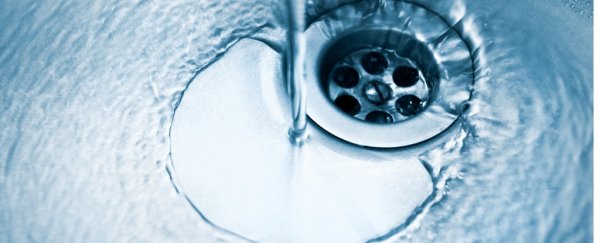Water scarcity is a growing global crisis and it will only get worse if we don't change our ways.
In less than a decade's time, half the world's population could be living in areas of high water stress, and that goes for those even in the wealthiest nations.
Today, scientists think the United States is only decades away from widespread water shortages, and yet across the nation around one percent of all water is reused.
This means the vast majority of this precious liquid is used once and then dumped down the drain or flushed down the toilet. If we want to "future-proof" our water distribution, wasting less and recycling more is a good place to start.
Using the drought-prone city of Houston as a model, researchers have now shown a modern wastewater treatment program could cover up to 28 percent of the city's water usage, improving the quality of drinkable water and saving money all at once.
"Ultimately, we want to know what our next-generation water supply system should look like," explains engineer Qilin Li from Rice University in Texas.
"A lot of people have talked about this," she adds, "but very little quantitative work has been done to show the numbers."
For decades, cycles of flooding and intense drought throughout the state of Texas have highlighted serious vulnerabilities in Houston's water supply system. The way it is currently set up, one small crack in the main system can lead to widespread water shortages, and water must travel through the system for much longer, costing time and energy, as well as the quality of water itself.
Using a modelling framework, created with data obtained from Houston Public Works, researchers evaluated and compared the cost-benefits of this current water infrastructure to several other alternatives.
In the end, the team showed how an already planned combining of the city's existing 39 wastewater treatment plants into just 12 could include a technological upgrade - to allow them to also produce drinking water.
This type of reuse would be pipe-to-pipe, distributing the treated water directly to users through the same distribution system already used.
"A feature of such distributed water supplies is the small distance to their points of use, which decreases conveyance needs and minimises water quality deterioration during transport, potentially reducing the economic and environmental costs of water supply," the authors write.
This isn't a new idea either. Since 1968, people in Namibia have been drinking recycled water from a system very much like this. In the country's capital city of Windhoek, treatment plants produce 35 percent of the water citizens need with no negative health impacts.
Houston, of course, is a different city in a different location, but the concept is still the same. The authors argue their approach is applicable to other water systems which can be tailored to suit each place and its current infrastructure.
As climate change drives a growing scarcity of water, particularly in the southwest of the US, many cities will have to face this decision sooner rather than later.
"All the technologies needed to treat wastewater to drinking water quality are available," says Li.
"The issue is that today, they're still pretty expensive. So a very important part of the paper is to look at how cheap the technology needs to become in order for the whole thing to make sense financially and energy-wise."
The upfront cost might be expensive, the authors admit, but reducing our dependency on surface water and groundwater could also reduce costs in the near future.
Plus, a more distributed system will use less energy pumping water around, reducing electricity costs, chemical costs, labour, materials and maintenance. Total annual savings from all these categories were estimated at nearly US$30 million.
"[O]ur analysis suggests that if reduced freshwater use and its benefits on ecosystem can be monetized, a value of $106 million per year will completely offset the additional costs needed to fully implement [distributed direct potable reuse]," the authors conclude.
Given what we're up against, it could be worth a try.
The study was published in Nature Sustainability.
